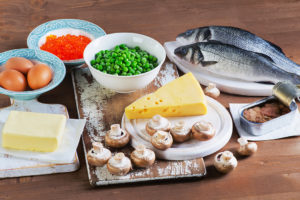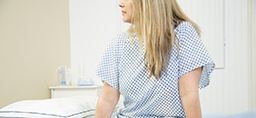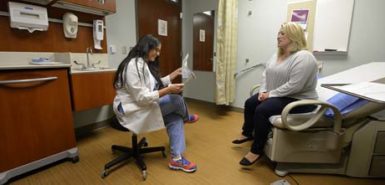
Vitamin D is essential for healthy bones, particularly for women as they move into midlife.
But new evidence suggests more isn’t always better.
Research shows that when people take Vitamin D beyond the recommended amounts, it may actually weaken bones.
Experts hope the findings encourage people to develop a more holistic approach, with a D-friendly strategy that includes more weight-bearing exercise, appropriate bone density screening and the right level of supplementation.
“Ideas about the right amounts of Vitamin D may have changed over time,” said Natasha Peoples, a family nurse practitioner specializing in midlife and menopause at Spectrum Health. “But bone density continues to be one of the most important things we talk about with women at midlife because menopause is such a risk factor for osteoporosis.”
The human body builds bone density until somewhere between the ages of 20 and 30.
“But around 50—and especially in those first five years of menopause—our bone density takes a huge nosedive,” Peoples said.
Vitamin D is difficult to get from food.
While humans can manufacture some vitamin D when exposed to sunlight, those who live above the 37th parallel—basically the Northern half of the U.S.—can’t count on the sun’s rays to help.
Women should take 2,000 international units, or IUs, per day, Peoples said.
But many people go overboard.
Beyond weakening bones, an excess of vitamin D can result in frequent or excessive urination, heart arrhythmias and high blood calcium levels, which can lead to vascular damage, said Caren Dobreff, a registered dietitian with Spectrum Health.
It’s easy to get confused.
Vitamin D supplements generally come in two forms: D2 and D3. Both are beneficial, but D3 is one step closer to the active variety required for calcium absorption.
They also differ in form, including soft gels, capsules, liquid and chewables.
Peoples and Dobreff’s tips for a healthier bone strategy:
Know your risks
Menopause isn’t the only factor. People are more likely to develop osteoporosis if they are Caucasian, have rheumatoid arthritis or malabsorptive conditions such as Crohn’s or ulcerative colitis.
People who have been on steroids for a long time, including asthma medications, are at higher risk. Thin women are at higher risk, too, as are smokers and people whose parents have had hip fractures.
Get a scan plan
Bone density tests are recommended for women at age 65 and men at age 70. They can help detect early signs of osteoporosis.
Depending on a person’s risks, it’s smart to get these scans earlier, Peoples said. This establishes a baseline to compare against later tests. (Scans often aren’t covered, so check with your insurance company.)
If a baseline scan in the first year or two shows density is low, “we have to pay closer attention because you’re at a higher risk of osteoporosis,” she said.
Muscle up
Strength training, including a weightlifting routine, helps build bones. If you hate the idea of pumping iron, don’t worry—any weight-bearing exercise helps, including running, hiking and climbing stairs.
Even walking can help, although it depends on how heavy you are, Peoples said. “If you don’t have a higher bodyweight, then you’re not putting that much extra stress on the bone.”
Consult with a trainer to pinpoint exercises that optimize bone health.
Be supplement savvy
Because the U.S. Food & Drug Administration does not regulate supplements, it’s hard to know what sets one supplement apart from another.
Dobreff recommends looking for a verification seal from the USP, an organization that runs quality tests on ingredients and products.
Check for a “best by” date, she said, and store them away from heat, moisture and light to maintain potency.
Since vitamin D is fat-soluble, Dobreff recommends taking it with food that contains a little fat, such as nuts or avocados. This helps with absorption.
Seek dietary sources
It’s true that vitamin D is hard to get from food, but you can still find it in swordfish, fatty fish such as salmon, canned tuna, canned sardines and even cod-liver oil. (The latter, Dobreff concedes, is not a crowd favorite.)
It’s also available in fortified products such as orange juice and milk products, including yogurts, eggs, fortified cereals and cheese.
Researchers are also experimenting with mushrooms, the only vegetarian food that can make its own Vitamin D.
“Consumers can try this at home by placing the mushrooms they purchase gill side up in the direct sun for 15 minutes,” Dobreff said.
 /a>
/a>
 /a>
/a>
 /a>
/a>
Very informative